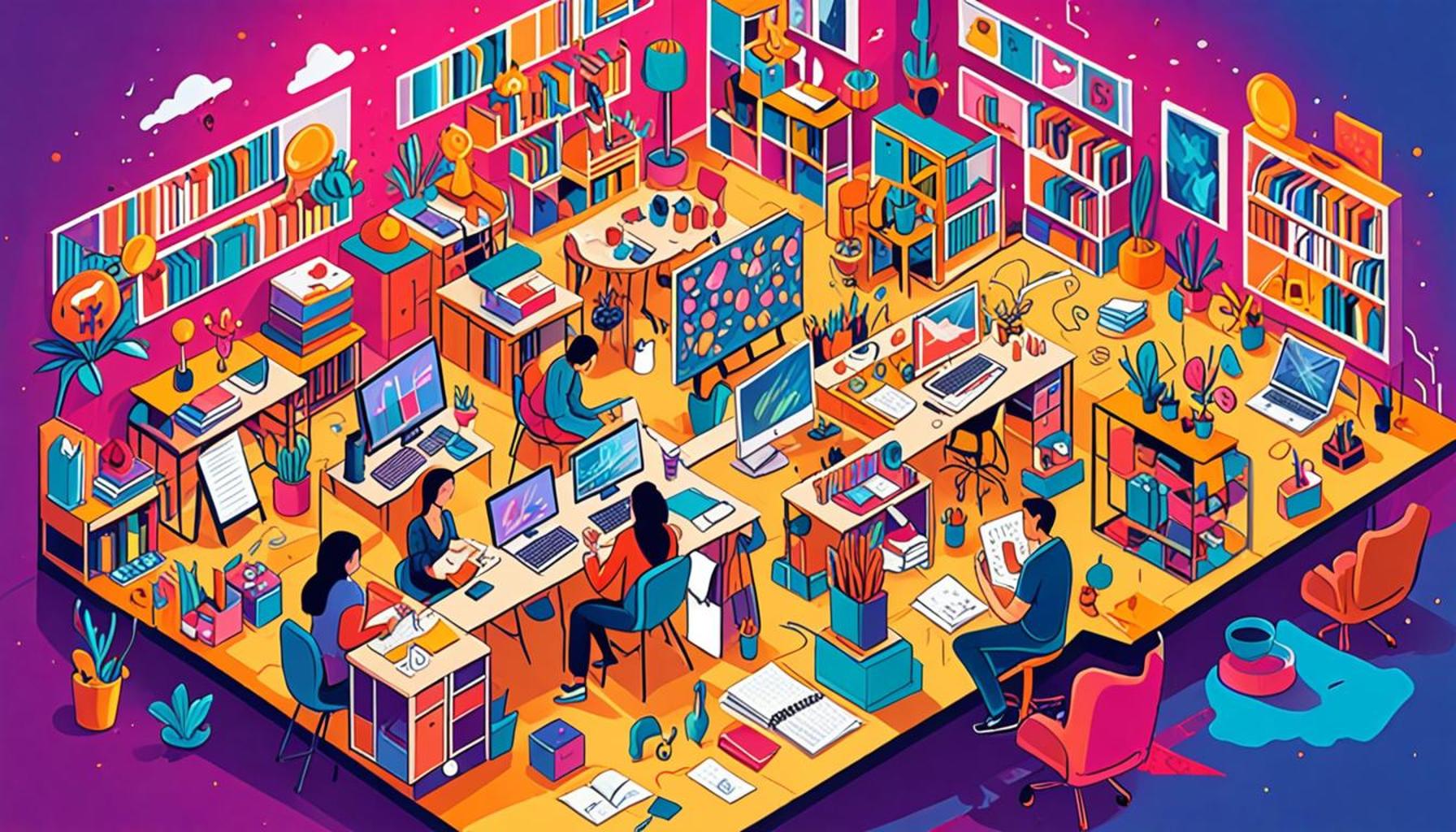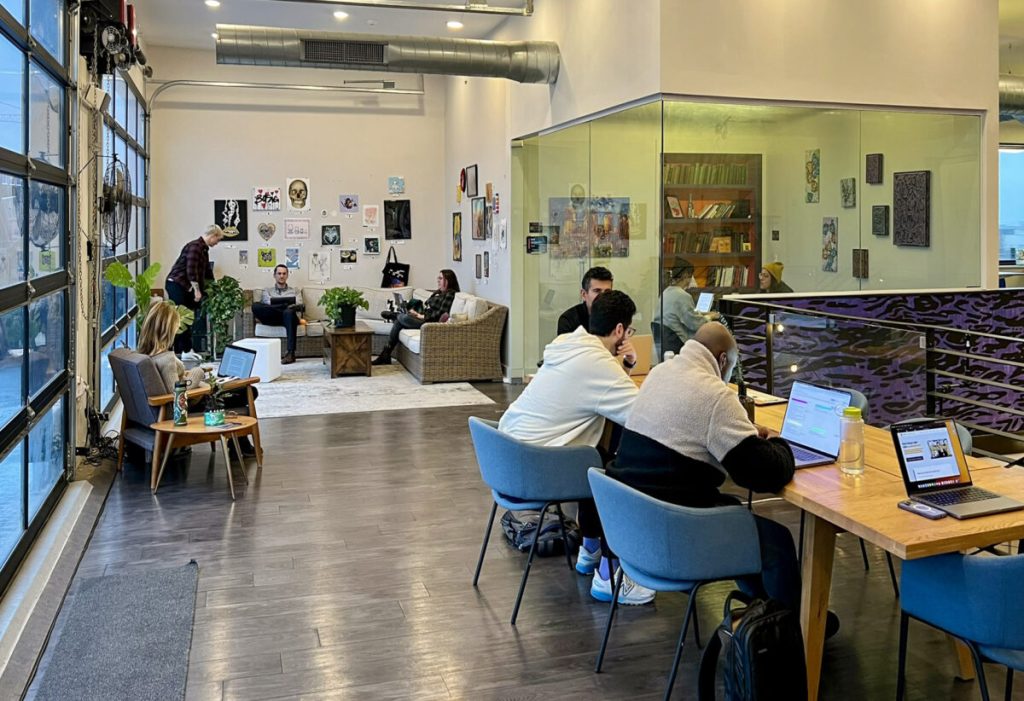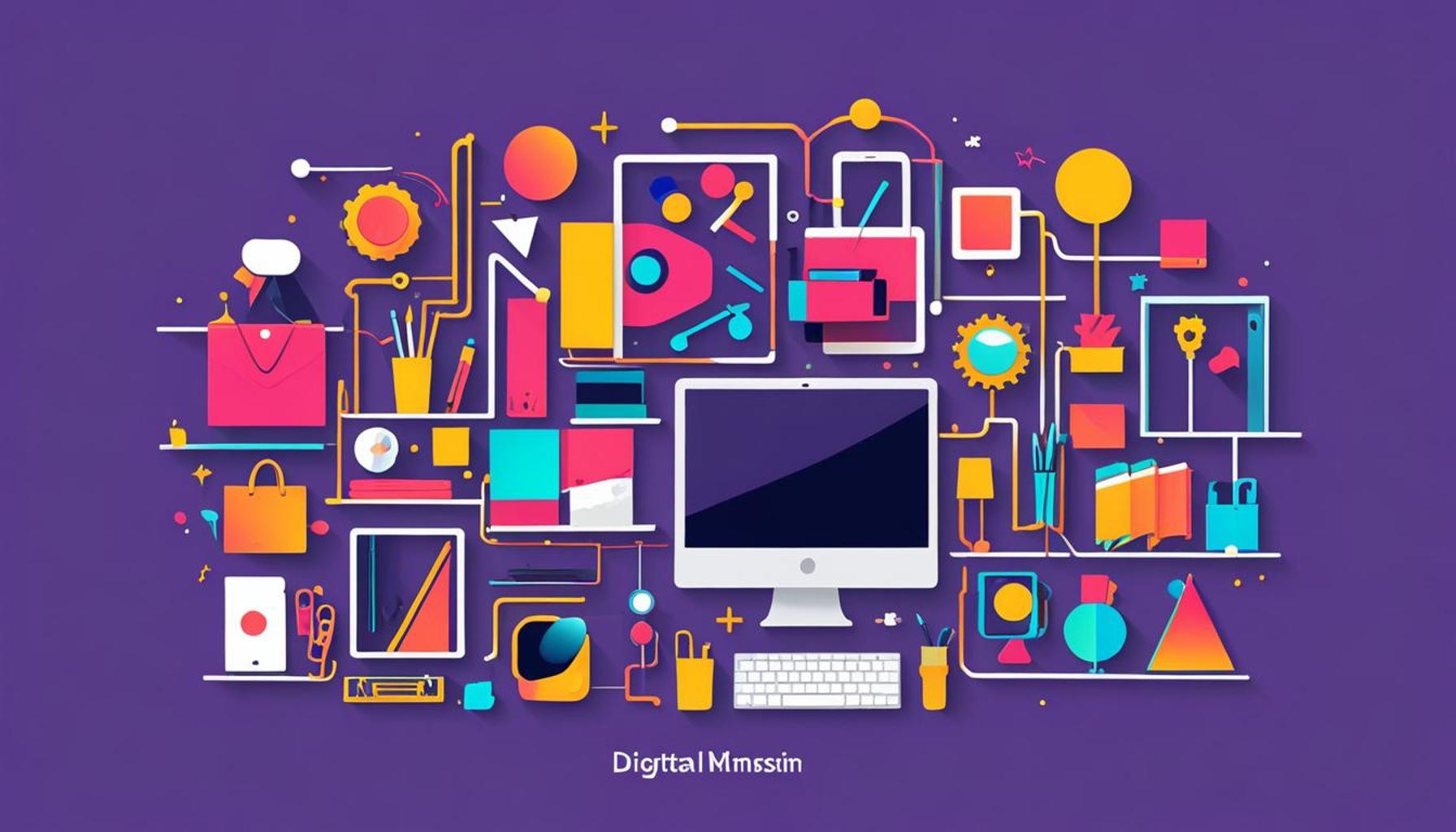Co-Creation Spaces: The Importance of Organization in the Era of Collaborative Work

The Shift Towards Co-Creation Spaces
As organizations strive to adapt to the constantly changing landscape of modern work, co-creation spaces have emerged as pivotal venues where creativity and collaboration converge. These spaces not only act as physical environments for work but also embody a culture of shared innovation among varying stakeholders, such as tech startups, design firms, and even educational institutions. Here, individuals come together to exchange ideas, solve complex problems, and drive projects forward in a manner that traditional office settings often hinder.
The effectiveness of such environments hinges largely on how well they are organized. An intentional organizational structure can significantly amplify both productivity and creative output. For instance, consider the concept of structured layouts. These are thoughtfully designed to promote movement and spontaneous interactions among individuals, utilizing open floor plans, modular furniture, and dedicated zones for brainstorming or quiet concentration. This fluidity accommodates the dynamic nature of collaborative work, making it easier for teams to engage with one another.
Further enhancing the effectiveness of co-creation spaces is the importance of defined roles. In collaborative projects, ambiguity can lead to inefficiencies and frustration among team members. Clearly delineated responsibilities not only streamline processes but also foster accountability, ensuring everyone knows their tasks and how they contribute to the collective goal. Regular check-ins and updates can also bolster this clarity.
Additionally, resource accessibility plays a vital role in facilitating creativity. Essential tools, technologies, and materials should be readily available, minimizing downtime and enabling teams to focus on what truly matters—their work. For example, providing easy access to prototyping tools, 3D printers, or collaborative software can significantly accelerate project lifecycles.
Data underscores the positive impact of these collaborative environments, with statistics indicating that organizations leveraging co-creation spaces experience a 30% increase in project efficiency. As more companies across the United States embrace flexible work models, the appetite for well-organized collaborative spaces is expected to soar. However, this rise prompts critical reflections on how best to optimize these environments for maximal teamwork and innovative outcomes.

To navigate the evolving future of work, there lies an urgent need to reevaluate our physical work environments. By delving deeper into the nuances of co-creation spaces, we can unlock a new realm of possibilities for collaboration and creativity, transforming the workplace into a vibrant hub of innovation.
LEARN MORE: Click here to dive deeper
Designing Effective Co-Creation Spaces
To fully leverage the benefits of co-creation spaces, organizations must consider several key elements that enhance collaboration and innovation. From the design of the physical environment to the tools provided, each aspect plays a critical role in fostering a culture of teamwork and creativity. As more companies adapt to flexible working models, it is essential to identify and implement strategies that maximize the efficacy of these collaborative environments.
Physical Layout and Design
The physical layout of a co-creation space significantly impacts team dynamics. An environment that prioritizes flexibility and openness encourages spontaneous interactions and the flow of ideas. Key design components include:
- Open Areas: Large, open spaces allow for unimpeded communication and collaboration. The absence of physical boundaries invites individuals from different teams to engage with one another.
- Breakout Zones: Designated areas with comfortable seating and informal settings provide a relaxed atmosphere for brainstorming and discussion, enabling teams to engage in more personal exchanges.
- Collaborative Tools: Incorporating technology like interactive whiteboards, video conferencing equipment, and collaborative software ensures that teams can work together efficiently, regardless of their physical location.
According to a study by the Gartner Group, organizations that implement adaptable office designs report a 25% increase in employee satisfaction. This highlights how a thoughtfully designed workspace can directly correlate to a more positive workplace culture, ultimately leading to greater creative output.
The Role of Technology
In the era of collaborative work, the integration of technology within co-creation spaces cannot be overstated. Accessible technology promotes seamless collaboration among team members, regardless of their physical location. For optimal effectiveness, organizations should prioritize:
- Cloud-Based Tools: Using platforms that enable real-time collaboration, such as Google Workspace or Microsoft Teams, allows for effective sharing of documents and ideas.
- Virtual Reality (VR): VR platforms can provide immersive environments that facilitate engagement and workshops, bridging the gap between in-person and remote collaboration.
- Feedback Mechanisms: Employing tools that collect ongoing feedback from team members can help organizations quickly identify and address issues, ensuring that the co-creation space continues to meet evolving needs.
Making technology an integral part of co-creation spaces not only enhances team productivity but also fosters a continuous learning culture, where sharing insights becomes part of the workflow.
As organizations continue to explore the potential of co-creation spaces, understanding the symbiotic relationship between organization, layout, and technology will be pivotal. By crafting an environment that facilitates collaboration and streamlines processes, businesses can unlock new avenues for innovation, helping them to thrive in an increasingly collaborative economy.
| Advantages of Co-Creation Spaces | Why They Matter |
|---|---|
| Enhanced Collaboration | Co-creation spaces foster an environment conducive to teamwork by encouraging open dialogue and idea-sharing. |
| Increased Innovation | Such spaces stimulate innovative solutions as diverse perspectives lead to unique ideas, driving progress across various sectors. |
| Flexible Work Dynamics | The layout and organization of these spaces allow for adaptable setups tailored to specific project needs, enhancing productivity. |
| Community Building | By bringing together individuals from various fields, co-creation spaces help in nurturing a strong community that shares knowledge and supports one another. |
In the fast-paced world of cooperative projects, organization plays a critical role in ensuring that ideas not only flourish but also transform into actionable outcomes. With the right setup, co-creation spaces can minimize chaos, direct collaborative energy effectively, and establish a structured approach to joint efforts. By embracing flexibility along with function, these communal areas redefine how we consider collaboration in the modern workspace. The emphasis on organization enables teams to harness creativity while maintaining a clear pathway towards their goals, paving the way for sustainable success in collaborative endeavors. The strategic implementation of co-creation spaces can consequently revolutionize the approach toward innovative teamwork, making them indispensable in today’s collaborative era.
DIVE DEEPER: Click here to learn more about reducing virtual waste
Fostering a Collaborative Mindset
Beyond the physical and technological aspects, nurturing a collaborative mindset within co-creation spaces is essential for maximizing their potential. This involves cultivating an organizational culture that encourages creativity, embraces diversity, and promotes the value of teamwork. By establishing this mindset, businesses can reap the benefits of enhanced collaboration and innovation.
Encouraging Diversity and Inclusion
One of the core principles of effective co-creation is the value of diverse perspectives. When individuals from varied backgrounds, experiences, and skill sets come together, they can challenge conventional thinking and inspire innovative solutions. To foster this diversity, organizations should:
- Recruitment Strategies: Adopt inclusive hiring practices that ensure diversity in not only race and gender but also thought, experiences, and professional backgrounds. This sets the stage for a rich tapestry of ideas during collaborative projects.
- Mentorship Programs: Implement programs that pair seasoned professionals with newer team members, facilitating knowledge transfer and fostering an environment where different viewpoints are celebrated and leveraged.
- Safe Spaces for Dialogue: Create opportunities for open discussions where team members are encouraged to share their ideas and opinions without fear of judgment, thus fostering a more credible platform for innovation.
A report by McKinsey & Company indicates that organizations with more diverse teams exceed their peers in profitability by 33%. This underscores the tremendous impact of a diverse workforce on a business’s bottom line and the necessity of creating an environment conducive to such collaboration.
Implementing Agile Practices
Incorporating agile methodologies can further enhance collaboration in co-creation spaces. Agile practices emphasize flexibility, iterative progress, and responsiveness to change, which are essential in today’s dynamic business landscape. Organizations should consider the following:
- Sprint-Based Collaborations: Organize projects in short, time-bound sprints that allow teams to focus on specific goals, make adjustments, and promptly respond to feedback, fostering a sense of urgency and purpose.
- Cros-Department Collaboration: Encourage teams from different departments to work on projects together. This cross-pollination of ideas often leads to unexpected insights and innovative solutions.
- Regular Check-Ins: Schedule frequent touchpoints to assess progress and adjust priorities based on immediate feedback, promoting ongoing alignment and engagement among team members.
Research from the Pearson Education Group suggests that agile methodologies can lead to a reduction in project timelines by as much as 30%. By incorporating these practices into co-creation spaces, organizations can facilitate faster innovation cycles and enhance overall productivity.
Leadership Styles That Promote Collaboration
The role of leadership in fostering co-creation spaces cannot be overstated. Leaders must embody and promote collaboration through their actions and decision-making. To support this, they should:
- Lead by Example: Demonstrate collaborative behaviors, including transparency, sharing credit, and proactive communication, setting a standard for team members to follow.
- Empower Teams: Delegate authority and provide teams with the autonomy to make decisions, which encourages ownership of their work and results in heightened engagement.
- Value Experimentation: Cultivate a culture where experimentation is encouraged, allowing teams to explore new ideas without the fear of failure influencing their willingness to innovate.
Ultimately, the effectiveness of co-creation spaces heavily relies not just on their physical attributes and technological support, but also significantly on establishing a culture of collaboration. As organizations navigate the ever-evolving landscape of collaborative work, understanding how to strategically foster an atmosphere that promotes teamwork and innovation remains crucial. By prioritizing diversity, agile practices, and collaborative leadership, companies can create environments where creativity thrives and the potential for breakthrough innovation is maximized.
DISCOVER MORE: Click here to transform your space
Conclusion: Embracing the Future of Collaborative Work
As we delve further into the era of collaborative work, the significance of co-creation spaces cannot be overstated. These environments stand as the frontiers of innovation, fostering creativity and collaboration among diverse teams. However, their success hinges on effective organization and strategic cultural practices that prioritize teamwork and inclusion. By embracing diversity through inclusive hiring and mentorship, companies not only enrich the ideation process but also enhance productivity—research indicates that diverse teams can lead to up to a 33% increase in profitability, tapping into the vast potential that a variety of perspectives brings.
Moreover, the integration of agile methodologies serves to streamline collaboration, shortening project timelines and enabling a quicker response to market demands—a critical factor in today’s fast-paced business landscape. Leadership plays a pivotal role in nurturing this collaborative culture, setting an example through transparency and empowering teams to take ownership of their contributions. The interplay of these elements fosters an environment where experimentation thrives, and groundbreaking ideas can emerge without the constraints of a fear-driven culture.
In conclusion, organizations must view co-creation spaces not merely as facilities but as dynamic ecosystems where innovation is cultivated. As we move forward, fostering a holistic approach that balances organizational structure with collaborative spirit will be essential. By continuing to invest in these transformative practices, companies can unleash not only their potential but also redefine the very fabric of collaboration in the modern workplace. The future of work is undeniably collaborative, and those who navigate this terrain with intention will lead the way in shaping what’s to come.


